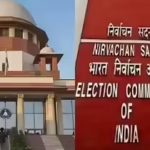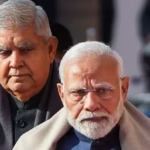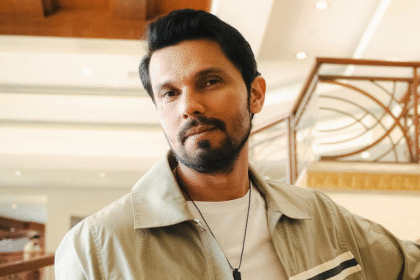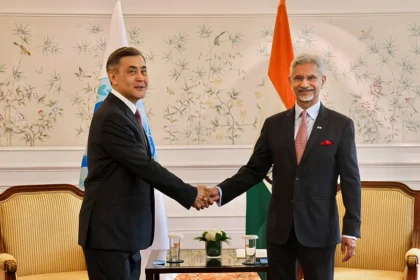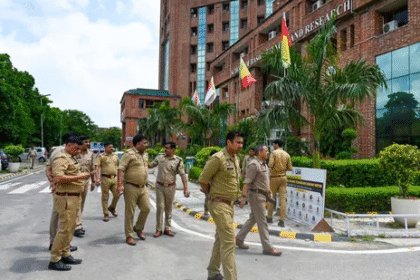Demolition in the Shadows of Progress – Mumbai’s Tunnel Vision
Mumbai, India’s financial nerve centre, has always been a city in motion—relentlessly expanding, rebuilding, and reinventing itself. With limited space but unlimited ambition, it is often forced to make tough choices between conservation and construction, between shelter and infrastructure. One such crossroad is now visible at the edge of the Sanjay Gandhi National Park (SGNP), where the Brihanmumbai Municipal Corporation (BMC) is set to demolish 625 hutments to make way for a crucial infrastructure project: the Goregaon-Mulund Link Road (GMLR) tunnel.
This move, though grounded in civic necessity, underscores a deep and often controversial pattern in Mumbai’s urban evolution—where the burden of progress frequently falls on the shoulders of the most vulnerable. The hutments, located in the Appapada locality of Malad East, have long been a home to families now classified as Project Affected Persons (PAPs). For them, development comes not as a promise but as a disruption.
The Project: Tunneling Beneath a Forest
At the core of the current upheaval is the ambitious GMLR project, which proposes twin tunnels beneath the Sanjay Gandhi National Park. Once completed, these tunnels are expected to significantly reduce traffic congestion and travel time between Mumbai’s eastern and western suburbs. They will also relieve pressure on existing link roads such as the JVLR and Eastern Express Highway, acting as vital arteries in the city’s ever-choking traffic map.
However, such infrastructure inevitably demands land—and in a city where every square inch is contested, it is the informal settlements that are most easily displaced. The 625 structures marked for demolition are sitting directly on land earmarked for the tunnel’s construction and access points. With the forested terrain of SGNP above, traditional widening or expansion is out of the question, making tunneling the only viable engineering alternative.
BMC’s Preparedness: A Ray of Certainty Amid Uncertainty
To its credit, the BMC appears better prepared than in previous such drives. It has constructed rehabilitation buildings for PAPs in Chandivali and Kurla, which are now ready for occupancy. According to civic officials, these buildings meet the eligibility norms defined under the Slum Rehabilitation Authority (SRA) guidelines and will be handed over to families displaced during the drive.
However, for the residents of Appapada, the transition is not merely physical but deeply emotional and socioeconomic. Generations have grown up in these settlements. Livelihoods, community networks, access to nearby schools, hospitals, and informal markets—all will be disrupted, even if temporarily.
For some, this isn’t their first brush with relocation. Many hutment dwellers in Mumbai’s forest or hill slope regions have lived with the anxiety of eviction notices for years. Yet, the scale and finality of the current move have made it clear that resistance will be futile. “We are not opposing development,” says Rafiq Shaikh, a local community representative. “But why must the poor always pay the price?”
The Bigger Picture: Balancing Growth and Displacement
The GMLR tunnel is undeniably a project of importance. Urban planners and transportation experts have long argued that east-west connectivity in Mumbai has been a chronic pain point. The city’s north-south oriented railway and road networks lead to daily commuter bottlenecks. Bridging this gap is essential—not just for smoother movement but for equitable development across zones.
Yet, this brings forth a critical question: can a megacity like Mumbai continue to grow without sacrificing its people or its ecology? On one hand lies the forest—Sanjay Gandhi National Park, a rare and rich green lung within an urban metropolis. On the other are slums—illegal but essential, informal yet integrated into the city’s economy.
This paradox isn’t new. Mumbai has seen it before in projects like the Metro Line 3, the Eastern Freeway, and the Coastal Road. In each case, progress came wrapped in the grief of forced relocation. The GMLR, unfortunately, is no different.
Eviction is rarely a word that brings peace. It carries the heavy connotation of loss, displacement, and uncertainty. For the 625 families in Appapada, Malad East, whose homes stand in the path of Mumbai’s ambitious Goregaon-Mulund Link Road (GMLR) tunnel project, eviction is not just a civic notice—it is a rupture of the familiar. The promise of rehabilitation hangs in the air, but behind that word lies a different kind of story—one that is as much about bureaucratic processes as it is about human adaptation.
The ‘Rehabilitation Buildings’: A Structure of Hope or a Box of Compromise?
The BMC’s Urban Development Department claims it has constructed new buildings in Chandivali and Kurla, designed specifically to house the Project Affected Persons (PAPs). These structures are part of the Slum Rehabilitation Authority (SRA) scheme, featuring standard 269 sq. ft. apartments—compact, vertical, and supposedly complete with amenities like water supply, sanitation, and electricity.
To the untrained eye, this may appear like an upgrade—after all, moving from tin-roofed slums into concrete housing sounds like upward mobility. But to the residents, the ground reality is far more complex.
“We are being shifted from a 350 sq. ft. home to a 269 sq. ft. flat. The structure is stronger, yes, but the space is tighter. We had our own bathroom, our shop front, a small courtyard… all that’s gone,” says Meena Vishwakarma, who has lived in Appapada since 1996. She runs a tailoring business out of her home. For her, the shift is not just a spatial one but an economic blow.
This is a common dilemma in Mumbai’s slum rehabilitation model: while the new structures provide structural safety and legal ownership, they often disrupt the livelihood ecosystems people have built over decades. The streets, the footfall, the informal businesses—they vanish in a high-rise corridor.
Eligibility Hurdles: Who Gets What and Why It’s Not Always Fair
Even as bulldozers inch closer to the settlement, the process of allotment remains fraught with tension. Eligibility under the SRA scheme hinges on documentation—proof that the resident lived in the slum prior to a certain cut-off date, most often set arbitrarily. In this case, the BMC has listed 625 structures for demolition, but only around 560 families have been confirmed as eligible for rehabilitation. What happens to the rest?
This exclusion sparks anxiety. Several families, particularly tenants who rented huts from long-time owners, find themselves in limbo. “We’ve been paying rent here for 12 years,” says Imran Pathan, a tenant and delivery agent. “But since our name is not on the BMC list, we’ve been told we’ll receive no flat.”
This raises a vital question about urban compassion and policy design—shouldn’t rehabilitation take into account all human lives impacted, not just property documents?
Relocation: The Psychological Cost of Being Uprooted
The relocation process, while framed in legal and bureaucratic language, takes a deeper psychological toll. Many families, especially children and the elderly, experience acute stress during eviction drives. “My daughter has her board exams next month. She doesn’t know if she’ll be writing them from Malad or from Chandivali,” says Sunita Sawant, a mother of two.
From schools and hospitals to proximity to work, the shift threatens established rhythms. And in a city like Mumbai, where daily travel can easily eat up three to four hours, even a move of 10 km can create a life-altering disruption.
Several activists and urban sociologists have flagged this pattern in the past. Dr. Neera Joshi, an urban planner, notes: “Rehabilitation must go beyond infrastructure. It must involve socio-economic continuity. If families are losing their access to schools, clinics, or workplaces, then we are creating fresh vulnerabilities.”
Security, Sanitation, and Services: The Gaps in New Homes
Even for those who do receive new flats, the transition is rarely smooth. Numerous SRA buildings across Mumbai have been criticised for poor construction, lack of maintenance, and insufficient infrastructure. While the Kurla and Chandivali projects are newer, there are already murmurs of concerns.
Some families, having visited their prospective flats, report poor ventilation, water seepage, and erratic water supply. Others are worried about safety—both in terms of building strength and security in communal areas.
“Vertical relocation without community planning often ends up isolating residents,” says Rajendra Gaikwad, a retired BMC engineer who has worked on multiple resettlement projects. “The key issue is that people are moved, but their problems are not.”
For many, the rehabilitation is not the end of their housing struggle—it is merely the start of a new, unfamiliar chapter.
A Necessary Sacrifice or a Mismanaged Crisis?
BMC officials argue that the tunnel project is of vital public interest. By reducing travel time between the eastern and western suburbs by over 30 minutes, it will benefit lakhs of daily commuters. Environmentally, tunneling beneath SGNP is preferable to road widening or cutting through green areas. From a planning perspective, the logic is sound.
Yet, the cost of this progress continues to be disproportionately borne by the urban poor. The people being displaced are not random encroachers—they are Mumbaikars, part of the same city workforce that keeps its service economy running.
This imbalance between development and displacement remains one of Mumbai’s most critical contradictions. As the city tunnels its way through forests and hutments alike, one must ask—who gets to stay and who is forced to move?
Mumbai’s story is one of paradoxes—home to billionaires and beggars, skyscrapers and slums, development and displacement. Each infrastructure project in this city isn’t just about roads, bridges, or tunnels. It’s a human story woven tightly into the concrete. As the Goregaon-Mulund Link Road (GMLR) project carves twin tunnels beneath Sanjay Gandhi National Park (SGNP), the city finds itself once again at the junction of ambition and accountability.
This brings us to a fundamental question: Can Mumbai strike a balance between urban planning and the human cost of displacement? Or are these just euphemisms in the face of unavoidable compromise?
From Urban Vision to Real-World Execution
On paper, the GMLR project is a compelling case for infrastructure advancement. It is designed to reduce travel time between the eastern and western suburbs from 75 minutes to under 30, connecting Mulund and Goregaon with a high-speed corridor running under the forest, thereby bypassing traffic-choked arterial roads.
As part of Mumbai’s Development Plan 2034, this tunnel project aligns with the city’s long-term vision for integrated mobility, reduced carbon emissions, and smarter urban distribution. It is also seen as a step toward “decentralizing development,” encouraging economic growth across suburban zones instead of concentrating it in South Mumbai or Bandra-Kurla Complex (BKC).
But there’s often a gulf between urban theory and on-ground experience. Behind the detailed architectural renderings, alignment maps, and policy documents lie real people—who lose homes, communities, and identities for the greater good.
The question isn’t whether projects like these should happen, but how they happen. Who plans them? Who participates in that planning? And who ends up bearing the brunt?
Lessons (Un)Learned: The Ghost of Past Redevelopments
To understand the human cost of such projects, one only needs to revisit previous large-scale infrastructure and relocation exercises in Mumbai:
- The Metro Line 3 (Colaba-Bandra-SEEPZ) project led to the relocation of over 1,500 families in Girgaon, Kalbadevi, and Dharavi. Many were moved to poorly ventilated buildings in distant suburbs, impacting businesses and schooling.
- The Eastern Freeway, hailed for its utility, came at the cost of displacing hundreds from Wadala and Chembur slums.
- Even the SRA schemes across Mankhurd, Govandi, and Kandivali have shown that merely handing over flats without supportive services leads to vertical slums—poor sanitation, crumbling structures, and high dropout rates in schools due to commuting problems.
Unfortunately, little has changed in the planning approach over the years. Rehabilitation is still mostly viewed as a logistical challenge, rather than a human-centred, participatory process. This pattern risks repeating itself in Appapada if stakeholders don’t recognize the difference between building houses and rebuilding lives.
Who Plans the City? And for Whom?
Urban experts often stress the importance of participatory planning. In theory, urban projects are supposed to include public consultations. But in reality, most of Mumbai’s informal or low-income communities rarely get a seat at the planning table.
“People living in slums are treated as obstacles rather than stakeholders,” says Prof. Rajesh Mehta, an urban development researcher at TISS. “There’s little effort to understand their networks, resilience systems, and what support they need to transition. The idea is: just move them out, and the job’s done.”
This extractive model of planning creates an unequal city. One section reaps the benefits of improved infrastructure, faster connectivity, and better living standards, while the other is pushed further to the margins—both spatially and socially.
Unless the planning narrative changes, Mumbai’s future will continue to be built on the erasure of its weakest.
The Role of Political and Institutional Will
The success or failure of such relocations often depends on political will, administrative efficiency, and institutional empathy. In recent months, Mumbai’s civic leadership has made attempts to frame this project in a more humane light. BMC officials have met with local representatives and assured that no demolition will begin until PAPs are ready to shift.
However, assurances are not always matched by outcomes. Implementation frequently gets outsourced to private contractors or local political intermediaries who may or may not uphold these commitments. Issues like missing names on beneficiary lists, delays in flat allotment, and corruption in slum surveys are still rampant.
Moreover, the timing of eviction drives—often just before monsoons or school exams—suggests that urban planning in Mumbai continues to ignore people’s rhythms and realities.
It is not about being anti-development. It is about demanding ethical development—development that does not bulldoze the lives of those who built the city with their labour.
Infrastructure or Injustice? The Slippery Slope of Progress
What is happening in Appapada is not unique to that locality. It’s part of a larger, national trend where urban expansion frequently displaces the poor to make way for infrastructure.
- In Delhi, Yamuna floodplain demolitions have been justified as “eco-restoration” projects.
- In Bengaluru, lakeside evictions are framed as “encroachment clearance.”
- In Ahmedabad, slum demolitions have occurred to build riverfront promenades.
Each time, the state asserts it is acting in public interest. But public interest, in such cases, often excludes the very public it claims to serve.
And when relocation is hurried, housing is inadequate, and people lose more than they gain, the project stops being infrastructure and starts becoming infrastructure-led injustice
Voices from the Ground – Stories of Displacement, Resilience, and Hope
Infrastructure projects may be shaped by blueprints, but their impact is measured in lives. Behind every demolished hut in Appapada, Malad East, lies a family with memories, struggles, aspirations—and often, trauma. As the Brihanmumbai Municipal Corporation (BMC) prepares to demolish 625 hutments to pave the way for the Goregaon-Mulund Link Road (GMLR) tunnel project beneath Sanjay Gandhi National Park (SGNP), the scale of human dislocation is immense, even if not always visible in policy documents or media headlines.
This part of the series focuses on personal narratives—firsthand accounts from families whose lives have been uprooted, reshaped, or left suspended by the prospect of relocation. These stories provide a human lens to what otherwise appears to be a purely administrative operation.
“We Built a Life Here”: Meena and the Tailor’s Corner
For Meena Vishwakarma, 52, her one-room home in Appapada was more than shelter—it was her workplace, classroom, and a shrine to hard-earned stability. For over two decades, she has run a small tailoring business out of her home, stitching blouses, school uniforms, and festival attire for residents of the locality.
“I never went to a formal school,” she says, adjusting the pedal on her age-worn sewing machine. “But I taught myself how to sew. I paid for both my daughters’ education through this work.”
The impending demolition has cut her income in half. New customers have stopped coming. Old ones are uncertain. “Even if we move to Chandivali, I won’t find the same clientele. I don’t know if people there will trust me or even need tailoring.”
Meena has packed most of her materials in cardboard boxes, but she hasn’t moved them to the new building yet. “I’m waiting for a written letter. BMC says it’s ready, but where is the key?”
The Young and the Restless: Aarav’s Confusion and Fear
Nine-year-old Aarav Sheikh sits quietly on a plastic chair outside his home, holding his school ID in one hand and a cricket bat in the other. His mother, Nazia, explains, “He’s asking whether his new building will have a ground to play cricket. He’s also scared that his school friends won’t be there anymore.”
Aarav studies in a municipal school just 500 metres from Appapada. It took his parents years to find a routine that balanced their low-paying jobs with his education and care. “If we move to Kurla or Chandivali,” Nazia adds, “the commute to school alone will become impossible.”
The family is exploring transfer options, but schools nearby the rehabilitation buildings are full, and many don’t accept mid-year admissions. “He’s just a child. But he knows we’re being thrown out of our comfort. His silence says what words can’t,” she says, brushing his hair affectionately.
Uncertainty on the Margins: The Tenant’s Dilemma
Imran Pathan, a food delivery rider, has lived in Appapada for 12 years—but not as an owner. He rents a 10×10 room from a family that has since moved to Dubai. He pays ₹2,000 per month, and his family of four survives on his monthly income of ₹14,000.
Despite living in the locality long enough to be considered a resident, Imran is ineligible for relocation benefits, as the hut’s ownership is not in his name.
“I am not asking for charity,” he says with quiet defiance. “Just some clarity. Where do I go if my room is razed? I deliver food to people across this city. Now I don’t even know how to feed my own children.”
This highlights a massive blind spot in most slum rehabilitation policies—tenants are often excluded from benefit lists, even though they form the bulk of the urban poor in Mumbai. No alternate housing, no rental compensation, no relocation—just eviction.
A Fight for Justice: Activists Step In
Local housing rights activists have stepped into the fray, not to block the project, but to push for transparent and inclusive implementation. Advocate Leela Rao, who works with a non-profit in Malad, has taken up several relocation grievance cases.
“There’s no doubt that the GMLR tunnel is necessary,” she says. “But the question is—why is every housing scheme or infrastructure expansion in Mumbai carried out at the cost of the vulnerable?”
She points out that BMC’s eligibility list lacks transparency, and the grievance redressal system is deeply flawed. Many residents were told their names are ‘missing’ from the final list despite possessing Aadhaar cards, voter IDs, and electricity bills linked to their Appapada address.
“If we don’t fight for procedural fairness now,” Leela adds, “then every new metro, road, or tunnel will be built on people’s silence and fear.”
Hope in Transition: A New Beginning for Some
Not every story is bleak. Suresh and Radha Iyer, a retired couple in their sixties, have just shifted to their new flat in Kurla under the PAP scheme. Their previous home had no bathroom, and they often had to walk to a community toilet two lanes away.
“The new place is smaller but stronger,” says Suresh, beaming. “And we finally have a western toilet inside. That’s a blessing at our age.”
Radha has started a community WhatsApp group for other newly resettled families in the building. She is encouraging them to plant tulsi and neem in the shared space near the stairwell. “Let’s not call this a compromise. Let’s call it a restart,” she says optimistically.
For families like theirs, the new home isn’t just a structure—it’s a second chance. But it also underscores a larger truth: when transitions are humane and supported, even displacement can be dignified.
Also Read : Aadhaar, Voter ID, Ration Cards Not Valid as Proof for SIR: Election Commission Clarifies



